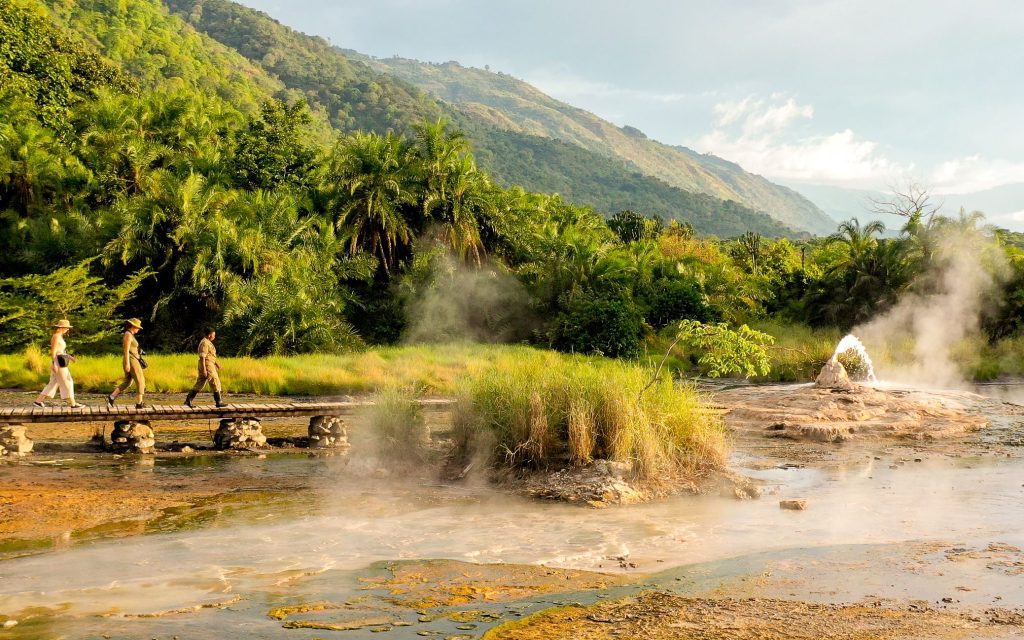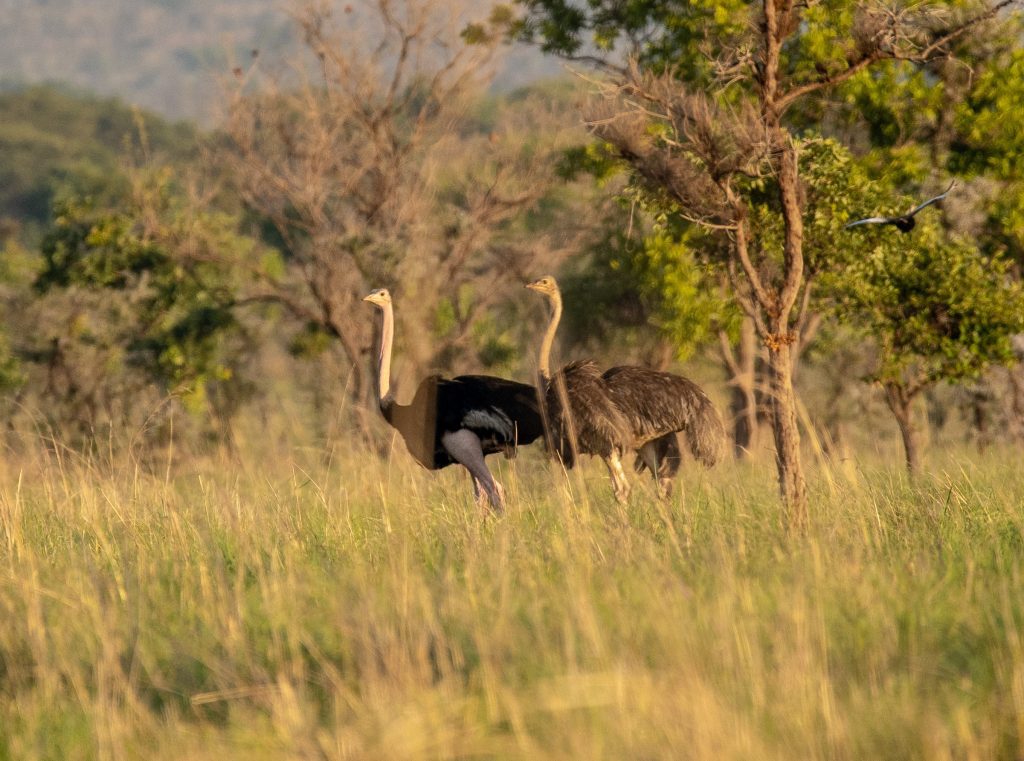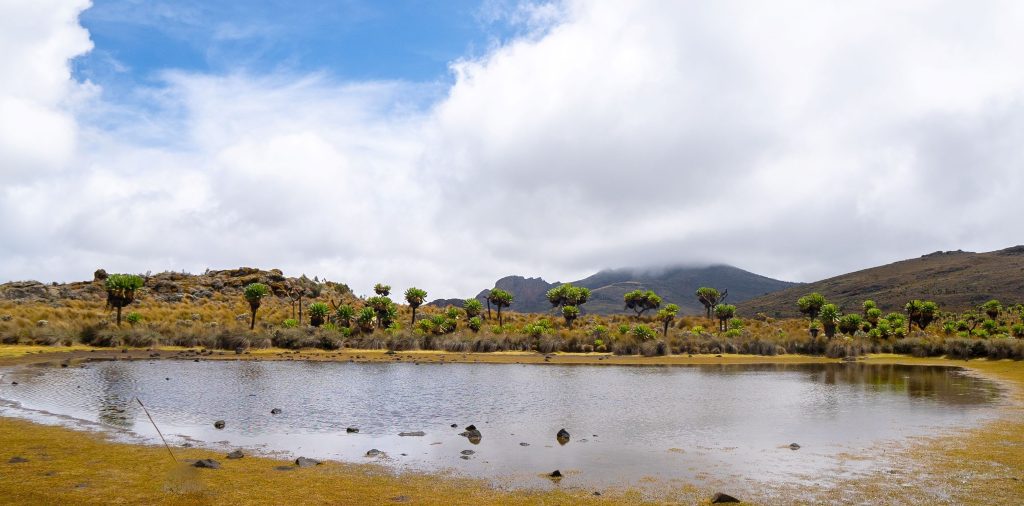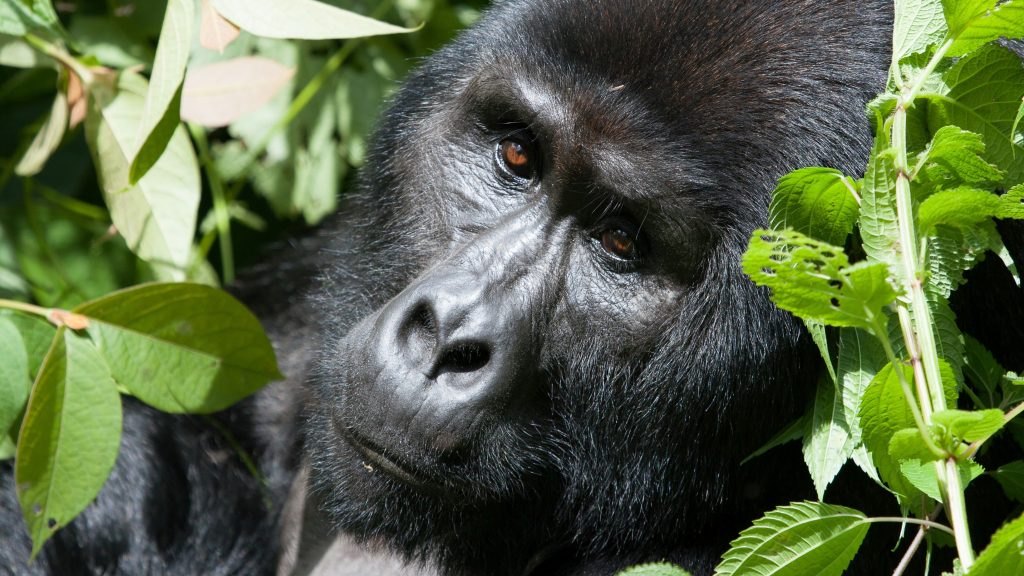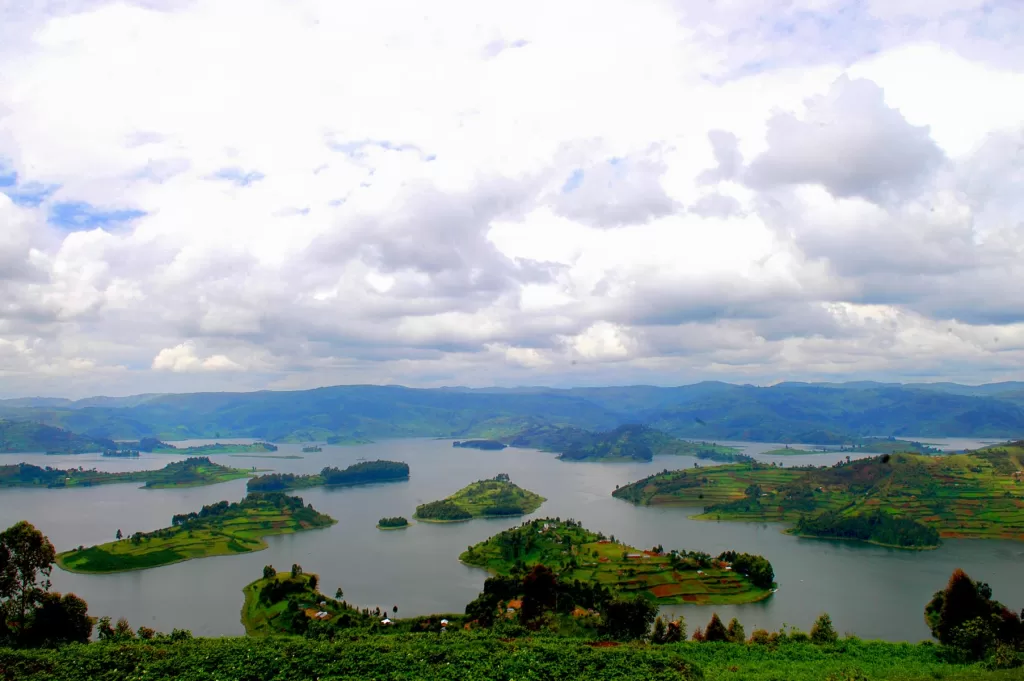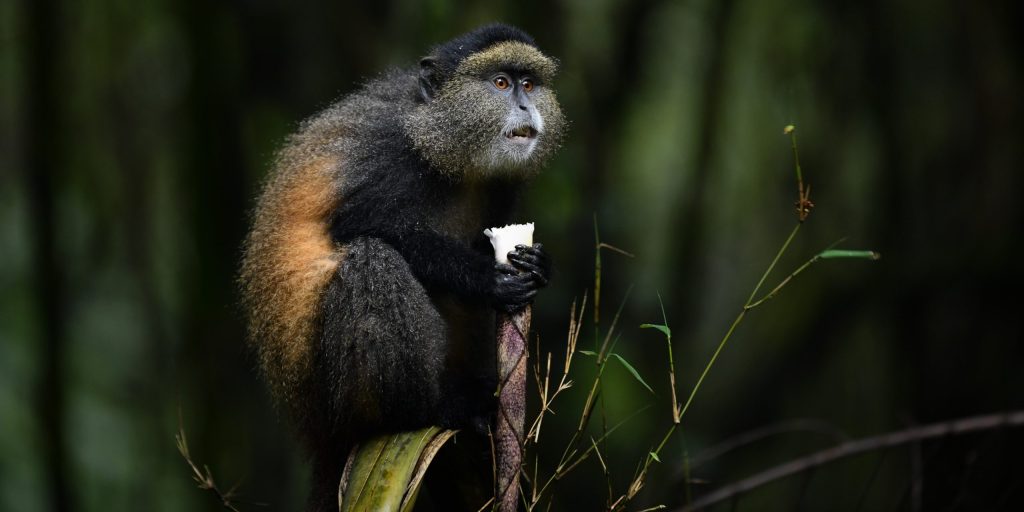Semuliki National Park
Wildlife
Semuliki National Park isn’t just about spotting large animals; sightings of buffalo and elephants, while present, are rare. Lions are heard more than seen, and leopards may occasionally be spotted at night.
The park is renowned for birdwatching and hosts numerous primate species, including chimpanzees, although encounters with them are infrequent due to a lack of habituation to humans.
Along forest trails, you can find grey-cheeked mangabey, black-and-white colobus, Central African red colobus, baboons, blue, red-tailed, de Brazza’s, vervet, and Dent’s mona monkeys. Potto and bushbabies emerge at night.
However, wildlife densities are low, with only the Uganda kob being common. Buffalo, elephant, and waterbuck are present, but sightings are irregular.
Most wildlife is skittish, though their calls are often heard at night. Leopards may be spotted during nocturnal drives, and various primate species, including Central African red colobus, black-and-white colobus, Dent’s mona, and De Brazza’s monkey, can be encountered.
Top things to do in Semuliki National Park
Explore Hot Springs
The most popular attraction is the cluster of hot springs – Sempaya Hot Springs. It includes the male hot spring, Bitende, which spans 12 meters in diameter, and the female hot spring Nyaismbi, a boiling geyser that ejects bubbling hot water about 2 meters into the air.
The trail to the male hot springs takes about 1 hour, and the track to the female hot springs takes about 30 minutes through the palm forest. Visitors can cook eggs and matooke in the boiling water.
Game drives / Wildlife Drives in Semuliki National Park
Elephant Track: As its name suggests, this track is renowned for its sightings of majestic elephants, the gentle giants of the African savannah. Visitors can marvel at these magnificent creatures as they roam freely in their natural habitat.
Alongside elephants, keep an eye out for waterbucks, with their striking coats and elegant horns, adding to the spectacle of the game safari in Semuliki National Park.
Antelope Track: This track promises encounters with an assortment of antelope species, including the charming pygmy antelopes, which captivate with their diminutive stature and elusive nature.
As you traverse this track, be prepared for delightful sightings of these enchanting creatures as they dart amongst the foliage. Look out for the agile Uganda kobs, known for their graceful leaps and striking appearance against the verdant backdrop.
Nocturnal Trail: As the sun sets over Semuliki National Park, embark on a unique adventure along the Nocturnal Trail. This track offers visitors the rare opportunity to observe the park’s nocturnal inhabitants as they awaken under the cover of darkness.
Look skyward to catch a glimpse of the elusive flying squirrels as they glide effortlessly through the night air. Listen to the calls of bush babies echoing through the trees, signaling their presence in the shadows.
And if you’re lucky, you might even catch a glimpse of the elusive leopard, stealthily navigating the nocturnal landscape.
Nature walks
Semuliki National Park boasts three enchanting nature trails, each offering a unique opportunity to immerse yourself in the park’s diverse ecosystem and captivating scenery.
Kirumia Trail: This trail is the longest and most popular in Semuliki National Park, offering an immersive journey through the park’s lush vegetation and diverse wildlife. As you traverse the Kirumia Trail, you’ll meander through pristine tropical forests, tranquil riverbanks, and verdant savannahs.
Look out for sightings of various primate species, including chimpanzees, colobus monkeys, and baboons. Birdwatchers will delight in the chance to spot some of the park’s 441 documented bird species, including the iconic African grey parrot and the rare Nkulengu rail.
Red Monkey Trail: Named after the striking red colobus monkeys that inhabit the area, the Red Monkey Trail offers a more intimate and secluded trekking experience. This trail winds its way through dense forested areas, providing opportunities for up-close encounters with Semuliki’s diverse flora and fauna.
Get ready to capture glimpses of the elusive red colobus monkeys as they swing gracefully through the canopy overhead. Along the way, knowledgeable guides will share insights into the park’s unique ecosystem and the conservation efforts aimed at protecting its inhabitants.
Sempaya Nature Trail: The Sempaya Nature Trail offers visitors the chance to explore the park’s famous hot springs, known as the Sempaya Hot Springs or “male” and “female” springs.
This short but captivating trail takes you through a scenic landscape of towering palm trees and bubbling thermal pools, where you can witness the spectacle of steam rising from the earth’s surface.
As you marvel at the geothermal wonders of the hot springs, you’ll also have the opportunity to learn about the cultural significance of these natural phenomena to the local communities.
Birding in Semilki National Park
Semuliki National Park is a haven for birdwatchers, boasting over 440 bird species, representing 66% of Uganda’s forest birds. The 13 km Kirumia River Trail offers opportunities to spot around 25 species not found elsewhere in Uganda, taking about 8 hours to complete.
Additionally, the Sempaya and Ntandi areas provide excellent birdwatching opportunities. Keep an eye out for species such as the White-crested Hornbill, Red-billed Dwarf Hornbill, and Piping Hornbill, among others.
A boat ride along Lake Albert offers a chance to spot the elusive Shoebill Stork.
Chimp tracking/primate walk
Approximately 250 chimpanzees roam the Toro-Semuliki wildlife reserve. Trekking usually starts at 8 am and lasts around 4 hours, depending on the primates’ search for food.
The reserve also hosts other primates like the Red-Tailed Monkey, Vervet Monkey, Black and White Colobus Monkey, Grey-Cheeked Mangabey, and De Brazza’s Monkey.
Cultural Interactions with the Bambuti
Four ethnic groups populate the Semuliki National Park region. The Bakonjo and Bamba reside on the mountain slopes and in the valley, respectively, focusing on agriculture. They cultivate cash crops like cocoa, rice, coffee, and potatoes, as well as staple crops like bananas.
The Batuku people, living on the rift valley floor north of the park, practice pastoralism and trade with neighboring communities in Uganda and the Democratic Republic of Congo.
The Bambuti pygmies inhabit both sides of the Semuliki River and maintain strong ties with the Basu Pygmies of the D.R. Congo.
Visitors can explore Bambuti communities to learn about their forest-based lifestyle, including demonstrations of food gathering, hunting techniques, tools, and forest survival strategies.
Where to stay in Semuliki National Park
Semuliki Safari Lodge
The lodge, located in the Toro-Semliki Wildlife Reserve at the heart of the Albertine Rift Valley, stands as the sole accommodation within the reserve. Bordering the Rwenzori Mountains foothills and Lake Albert, it offers 2 Safari Suites boasting outdoor bathtubs and private verandas, along with 6 luxury tents featuring spacious verandas.
The main lodge, positioned on a hilltop overlooking the riverine valley with the Rwenzori Mountains in the backdrop, showcases a large dining area, plush seating, and unique traditional art.
Additionally, guests can enjoy a patio bar and a swimming pool area with a breezy shaded lounge, offering superb forest views, ideal for a leisurely afternoon.
How to Get to Semuliki National Park
To reach Semuliki National Park, take the shortest route from Kampala to Fortportal via Mubende, covering approximately 180 km in a 4-5 hour drive.
Alternatively, consider the Kampala to Fortportal route via Masaka and Kasese, which takes 7-8 hours.
Along this route, you can make stops at Lake Mburo and Queen Elizabeth National Park for added exploration opportunities.
[/vc_column_text]
Other Uganda Destinations
ABOUT TRAVELERS LINK AFRICA
Our mission at Travelers Link Africa is to connect people to positive travel experiences enabling them to see the world differently, transforming lives and the communities visited.
To do this we offer authentic travel experiences taking you on both an outer adventure and an inner journey to create memories of a lifetime with Uganda, Kenya, Tanzania, and Rwanda
GET SOCIAL WITH US
Follow our Travelers Link Africa adventures and share your own with us
CONNECT WITH US
We’re here to help, so get in touch with our friendly travel consultants to book your package or add customizations your safari
Our main phone number is
+256 754 062 366
– OR –
